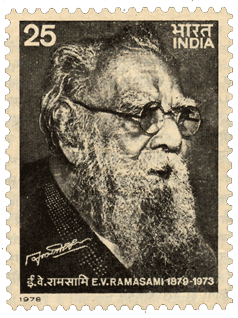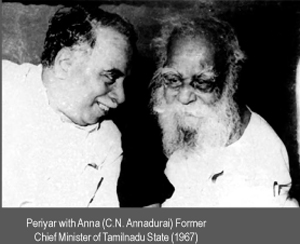Countries around the world set their eyes glued to India whenever the country rolls out its largest democratic event, general elections. This time there were around 82.4 million eligible voters who had the royal right to exercise their power. The world awes at the organization and planning and conduction of this unparalleled show at such a massive scale and this time so much was the interest that National Geographic channel (probably its Asian wing) went on to showcase a documentary on Indian general Elections 2014.
 But we aren’t going to ponder over this now, here. Instead we narrow our magnifiers to look into the trends in Politics in Tamil Nadu, the state where Dravidian Politics hailed. The intention of this article is not to point the fingers on anyone individual, or a political party in the state. Instead it’s the observation of a common man who lives here ever since his birth. The doyen of Dravidian politics in Tamil Nadu is Mr. E.V. Ramasamy affectionately addressed as ‘Periyar’ by his followers is a cult political figure since pre-independent era. It’s from his Dravida Kazahgam, the Dravidian political legacy hails from. Later from this single ideology, came different political schools which later evolved into independent political parties.
But we aren’t going to ponder over this now, here. Instead we narrow our magnifiers to look into the trends in Politics in Tamil Nadu, the state where Dravidian Politics hailed. The intention of this article is not to point the fingers on anyone individual, or a political party in the state. Instead it’s the observation of a common man who lives here ever since his birth. The doyen of Dravidian politics in Tamil Nadu is Mr. E.V. Ramasamy affectionately addressed as ‘Periyar’ by his followers is a cult political figure since pre-independent era. It’s from his Dravida Kazahgam, the Dravidian political legacy hails from. Later from this single ideology, came different political schools which later evolved into independent political parties.
Periyar E.V.Ramasamy, a member of Indian national Congress came out of the party, having felt that the party acts with communal interests- only backing the interests of Brahmins, the upper caste Hindus. He joined the Justice party and went on to head in 1939. This later morphed into the Dravida Kazahagam. Periyar was an advocator of caste abolition and a staunch feminist, whose thoughts and philosophy is immensely influential even now. His ideology is revered as much as that of Mr. Gandhi’s that his school of thought is identified as ‘Periyarism’ by scholars and followers alike.
Dravida Munnetra Kazahagam (DMK) founded by Mr. C.N.Annadurai, became a political sensation and won the trust of commoners with its historical protest against Hindi language in the 1960s. In fact the agitation against Hindi Language, in Tamil Nadu dates back to 1940s in the post independent era itself. No other Indian state had registered an opposition as vehemently as Tamil Nadu did.
In the 1950s Mr. Karunanithi and Mr.M.G.Ramachandran became the star attractions of the DMK party. Both hailed from cinema background, the former as screenwriter and the later as a star actor. The gifted eloquence of Mr. Karunanithi- popularly called ‘Kalaigar’- helped DMK party to reach the public through historic speeches at party meetings. He replaced Mr. Annadurai as party chief post Anna’s death in 1969.
On the other hand actor M.G.Ramachandran, known widely as MGR, had created huge fan base for him and was enjoying a demi-god status. Post his political engagement; he took his movies as a tool to propagandize party ideologies. Besides he also most appropriately used the cinema medium for his character building which generated an indelible charisma of him among the public which remains strong even today, despite his passing away in 1987. All his fans turned into party cadres that became a game changer in Tamil Nadu politics. It is with him, the enduring cinematic influence coupled with the politics in Tamil Nadu.
Though the initial attempts were futile for DMK, later they began to taste success in elections. Fellow politician Kamaraj of Indian National Congress was the star politician in the 60s. The Congress era came to an end in the late 60s and the Dravidian parties replaced the political scene since then.
DMK evolved into an unmatched political monopoly, till MGR went of the camp to start ADMK (Anna Dravida Munnetra Kazhagam). The politics began to oscillate between these two poles ever since.




Leave a comment